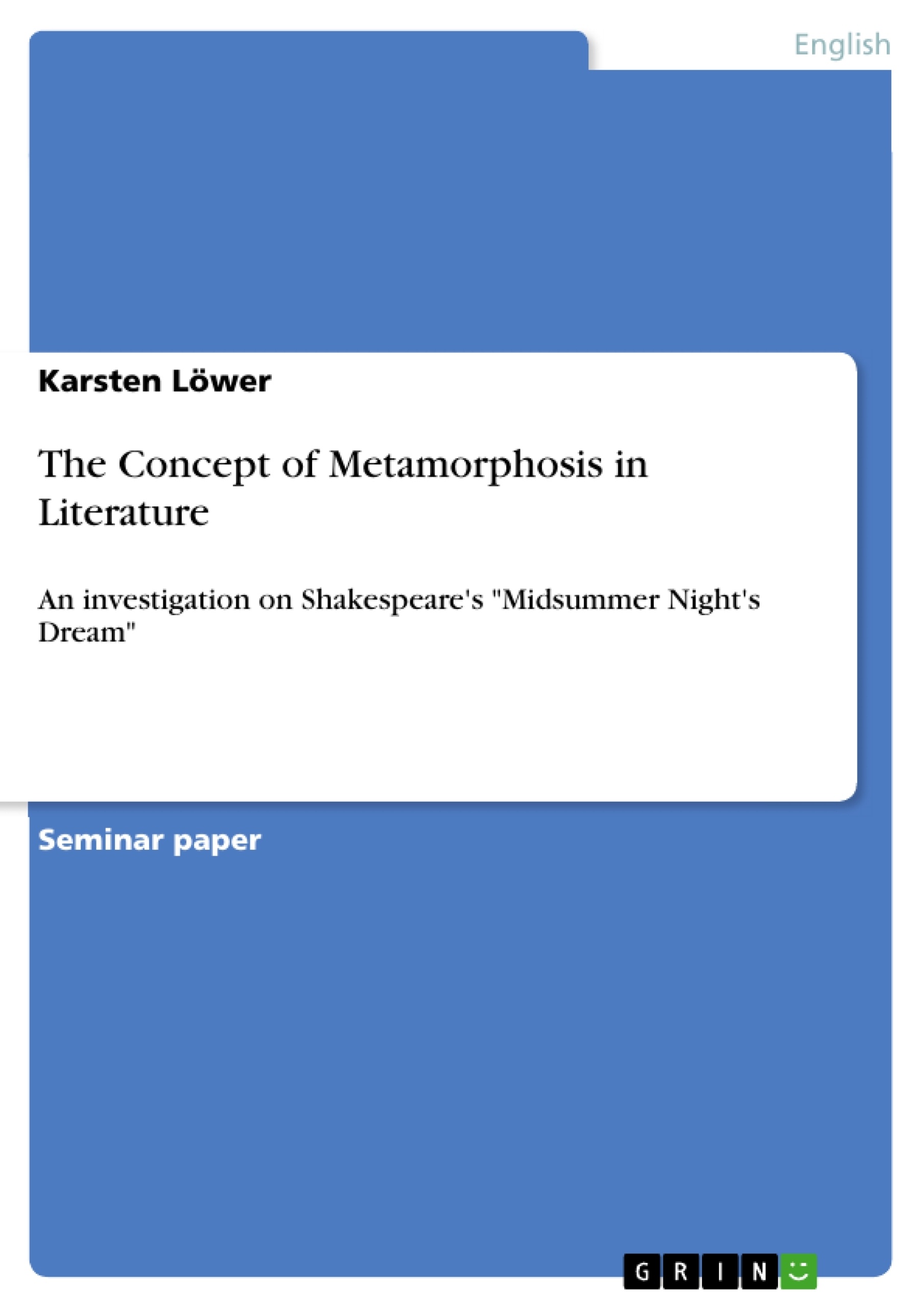A Midsummer Night´s Dream (from here on in referred to simply as Midsummer), Shakespeare´s popular comedy about the fickleness and difficulty of love, has been written around 1594 and 1596, most likely as an entertainment piece for a royal festivity (Barber, 1959). An often cited and likely possibility for its first performance was the wedding reception of one Elizabeth Carey, a godchild of Queen Elizabeth I. to Thomas, son of Lord Berkely, which took place in February of 1596 (Holland, 1995). Still this remains speculative and it is not the only uncertainty surrounding Midsummer. Together with The Tempest and Love´s Labours Lost it is one few examples in Shakespeare´s canon in which no singular source text can be identified to serve as a basis for the poet´s interpretation. Although, as will be shown later it contains references to an array of literary texts, most famously Ovid´s Metamorphoses, not all aspects of its plot can be traced (Brown and Johnson, 2000). A case in point is the fairy realm and the fairies themselves. It appears that Shakespeare may have taken his cue from English, Irish and Germanic folk legends, which in some cases featured malicious fairies, but the idea of the tiny, winged and ultimately good-natured creatures, an image which has become lodged into popular consciousness ever since, did not exist in Shakespearian times and has thus been first conceived by Shakespeare himself (Pfeiffer, 1971). Furthermore the play is a composite of four individual strands of narration, artistically interweaved. Therefore, whereas for instance the royal realm represented by Theseus and Hippolyta, is derived from Greek mythology, the blending together of the four realms within a coherent narrative is an original Shakespearean formulation. The fact that Shakespeare does combine and blend together these different narrative strands, the mythical dimension with the physical reality of palace life, will be shown to correspond to the overriding theme of Midsummer: That of transformation and recombination, a proposition which will be investigated in the analysis presented here. [...]
Inhaltsverzeichnis (Table of Contents)
- Introduction
- Form, plot and literary references
- The concept of metamorphosis and its representation throughout literature
- The concept of metamorphosis in Midsummer
- Motifs of transformation in Midsummer
- The meaning of the transformations in Midsummer
- Discussion
Zielsetzung und Themenschwerpunkte (Objectives and Key Themes)
This analysis aims to investigate the concept of metamorphosis in Shakespeare's "A Midsummer Night's Dream" (referred to as "Midsummer" throughout this analysis). It argues that the function and process of metamorphosis in "Midsummer" is not one of transcendence, but rather the creation of something new and valuable through recombination and unification. Key themes explored include:- The role and representation of metamorphosis in literature
- The application of the concept of metamorphosis to "Midsummer" and its various characters and plot points
- The blending of different narrative strands in "Midsummer" and their relationship to the theme of transformation
- The postmodern aspects of the play and its self-referential nature
- The play's exploration of the complexities of love, societal expectations, and individual agency
Zusammenfassung der Kapitel (Chapter Summaries)
Introduction
This chapter introduces "Midsummer Night's Dream" as a Shakespearean comedy written around 1594-1596. It highlights the play's unique characteristics, such as its lack of a clear source text and its blend of various narrative strands, including Greek mythology, English, Irish, and Germanic folk legends. The chapter argues that the play's overarching theme is transformation and recombination, which is reflected in its diverse elements and the interconnectedness of its characters.Form, plot and literary references
This chapter delves into the play's structure and plot, highlighting its comedic nature and its exploration of young love, misunderstandings, and mistaken identities. It discusses the various narrative strands that intertwine in the play, including the Athenian palace, the fairy kingdom, and the laborers' play. The chapter also examines literary references in "Midsummer", particularly Ovid's "Metamorphoses" and Apuleius's "The Golden Ass", which both contribute to the theme of transformation.Schlüsselwörter (Keywords)
The primary focus of this analysis is on Shakespeare's "A Midsummer Night's Dream", specifically its exploration of metamorphosis and transformation. Keywords include:- Metamorphosis
- Transformation
- Recombination
- Narrative strands
- Literary references
- Ovid's "Metamorphoses"
- Apuleius's "The Golden Ass"
- Shakespearean comedy
- Postmodernism
- Quote paper
- Karsten Löwer (Author), 2010, The Concept of Metamorphosis in Literature, Munich, GRIN Verlag, https://www.grin.com/document/151730



